
views
Practicing on the Low Beam
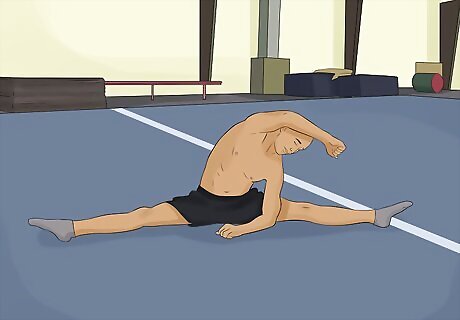
Warm up first. Gymnastics is a very physical sport, requiring a lot of the muscles in your body to work together. Warming up for even a few minutes before you get on the beam can help prevent injuries in addition to reducing soreness or muscle pain. Touching your toes, lunges, jogging in place, and doing sit ups are some easy ways to get your blood pumping and your muscles ready to work.
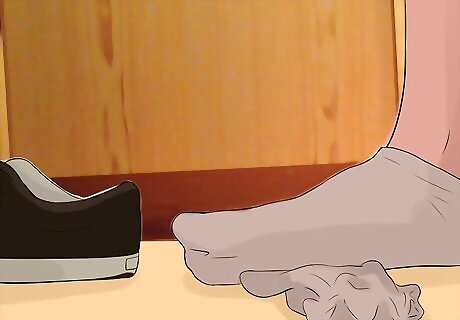
Remove your shoes. Many, if not all, gyms will require you to remove your outdoor shoes before walking onto gymnastics equipment. If you are allowed to wear shoes in the gym or on the mats, you will definitely want to take them off for the balance beam.
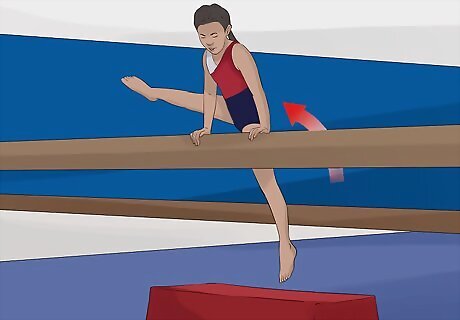
Step up on the beam. Try to balance your weight when initially placing your feet on the beam. You may notice right off that looking at your feet helps. See how long you can balance with your feet in different positions, like one foot in front of the other, feet turned out, or feet sideways.

Look at a distant point, like a wall. Choose one thing on the other side of the room to focus on to help you balance. If you can keep your head up and your neck still, you have a better chance of staying on the beam.

Extend your arms out to your sides. Putting your arms out like airplane wings may feel silly, but it will help you balance. When you’re first learning to walk the beam, it may be helpful to walk with your arms out. If you start to sway on the beam, use your arms to try to balance yourself.
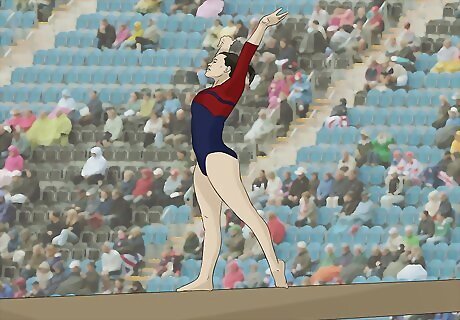
Keep your muscles tight. Try to keep your core muscles tight while walking on the beam. Not only will you feel an improvement in your balance, you will also find that it may be easier to control your stance and motions.

Place one foot in front of the other. Take one or two steps while focusing on your distant spot. As you walk across the beam, take some time to figure out how to best place your feet -- you may find that walking faster and staying on the balls of your feet helps you get across the beam. If your feet are bigger, you may need to turn your feet out or let your baby toes hang over the edge; if your feet are smaller, you'll mostly likely be able to support your whole foot on the narrow beam.
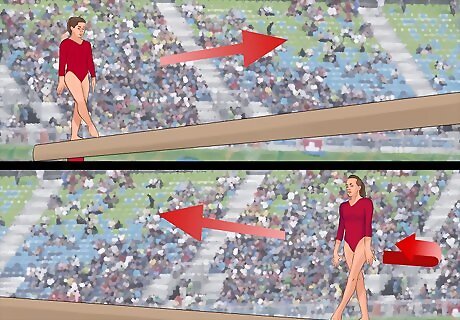
Walk across the beam and turn around. You may want to practice walking back and forth on the beam so that you can work on turns. When you get to the end of the beam, pivot on one foot and turn around. Take a moment to get your balance before walking back to the starting point.

Step off the beam carefully. Try to land on both feet when stepping down off the beam. Even though the low beam is only a few inches off the ground in most cases, it's high enough to cause an ankle sprain if you're not careful about your landing.
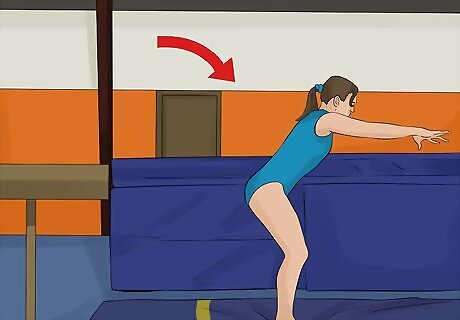
Take time to practice jumping off the beam as well. You'll want to jump with both feet and land on both feet with your knees slightly bent. Practicing this step will help with your form once you're ready for the high beam.
Working with Other People in the Gym
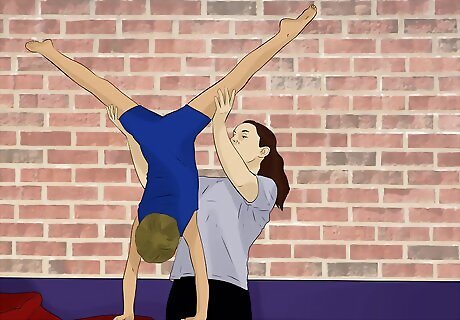
Find a spotter to assist you. Working with a spotter is optional, and can be very helpful when you're first starting out. A spotter can guide you by placing a hand on your back or abdomen, and can help you to understand where you are making mistakes.
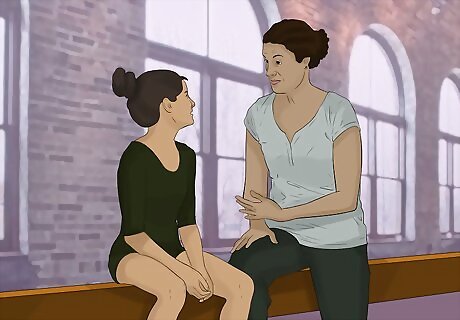
Talk to your coach or gym supervisor. Ask your coach for tips on learning how to master the balance beam. They may have suggestions for ideas you can try at home, like building your own beam or doing leg exercises. Let your coach observe you on the balance beam so that they can make suggestions for improvement.
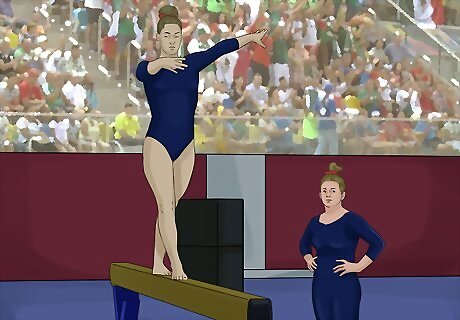
Observe the more experienced gymnasts around you. If there's that one person who seems to float around on the balance beam and do the best tricks, watch them for a moment while they practice. You'll want to avoid creating a distraction and stay well out of the way so that they can concentrate. After they've finished, you may even be able to talk with them and ask for tips and advice.
Moving to the High Beam

Spend some time sitting on the beam in different positions. Straddling the beam, kneeling, and sitting side saddle are skills that you can work on building. The more comfortable you are on the high beam, the easier it will be to balance.
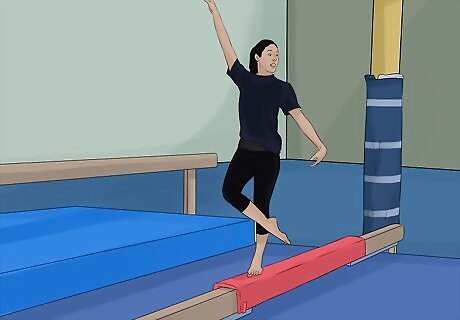
Use what you learned on the low beam. A traditional high beam is 4 feet (1.2 m) off the ground, and can feel quite high once you’re standing. But the same basic rules apply whether using the low or high beam -- so using what you've learned up to now should make the high beam a lot less intimidating.
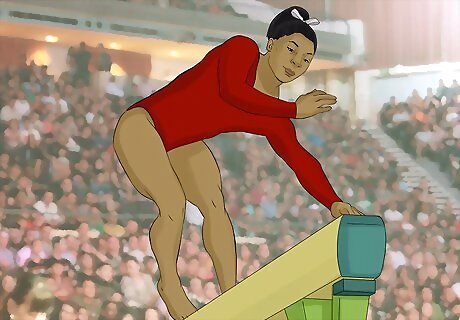
Get comfortable with the height of the beam. Many people are afraid of heights or experience difficulty balancing from time to time - if getting on the high beam is a brand new experience for you, it make take awhile to get comfortable. Take a few deep breaths to calm your fears. Don't think about how high you are, and try to avoid looking down. If you feel dizzy or nauseous when standing on the beam, get down immediately. Ask your spotter for help if you need it.
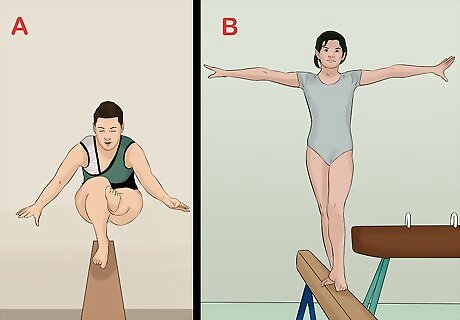
Practice going from kneeling to standing until you can do it without falling off. It's easy to fall at this point, so practice getting into a standing position over and over. When you are kneeling on both knees, get your feet under you and then push up with your hands. If you lose your balance, try to tuck your arms and legs and fall to the mat in a ball -- it's unlikely that you'll land on your feet when falling from a bent or hunched position.
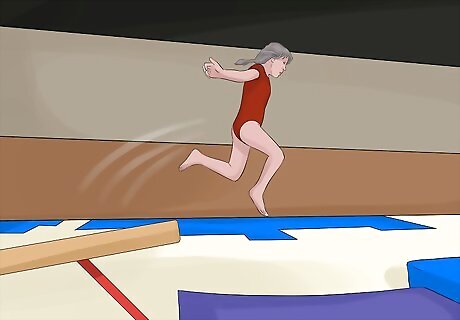
Jump down if you feel like you're about to fall. Once you're standing on the beam, if you feel yourself falling you have a much better chance of landing on your feet. Flailing your body or trying to grab at the beam in an attempt to stay on can lead to injury if you hit your head or face on the beam, so focus instead on trying to gain control of the fall and landing on your feet.
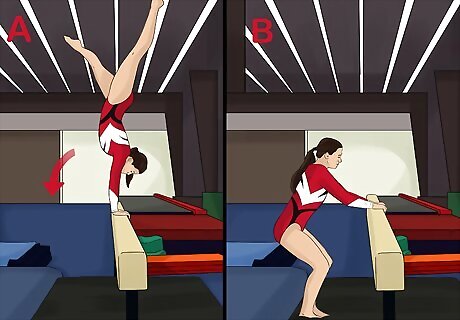
Practice your dismount. Now that you're up, you'll have to get down! It may take a while before you can do a perfect flip off the end of the beam and land like an Olympian, so at first just work on dismounting without getting injured. When you leap or jump off the beam, try to land on both feet with your knees slightly bent. This will distribute your body weight evenly and help to prevent ankle injuries.
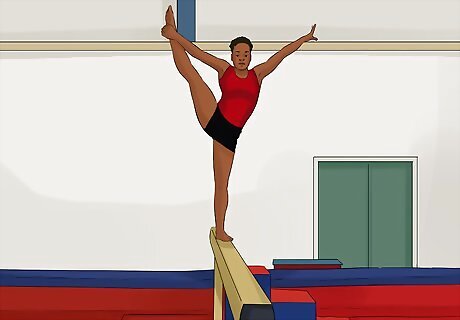
Study more difficult moves you might want to learn. While on the beam you can learn to leap, turn, jump, or do other acrobatic moves; skills which will be necessary if you’re interested in competitive gymnastics. Gymnastics is a very popular sport, so finding videos to watch or books to read on the subject is easy. Check your local library or ask your coach. Once you’ve learned some harder moves, you’ll be a lot more confident on the beam.













Comments
0 comment